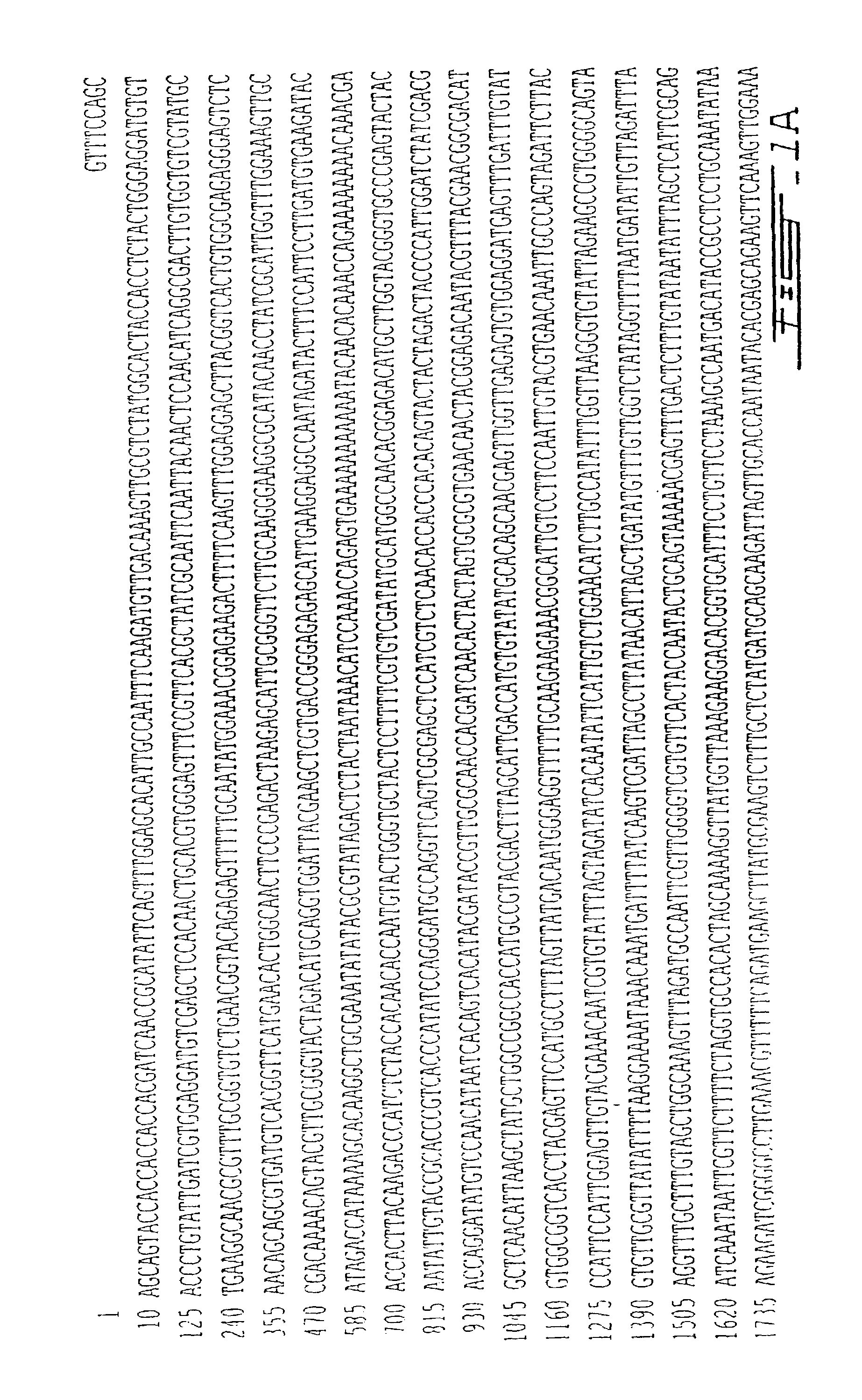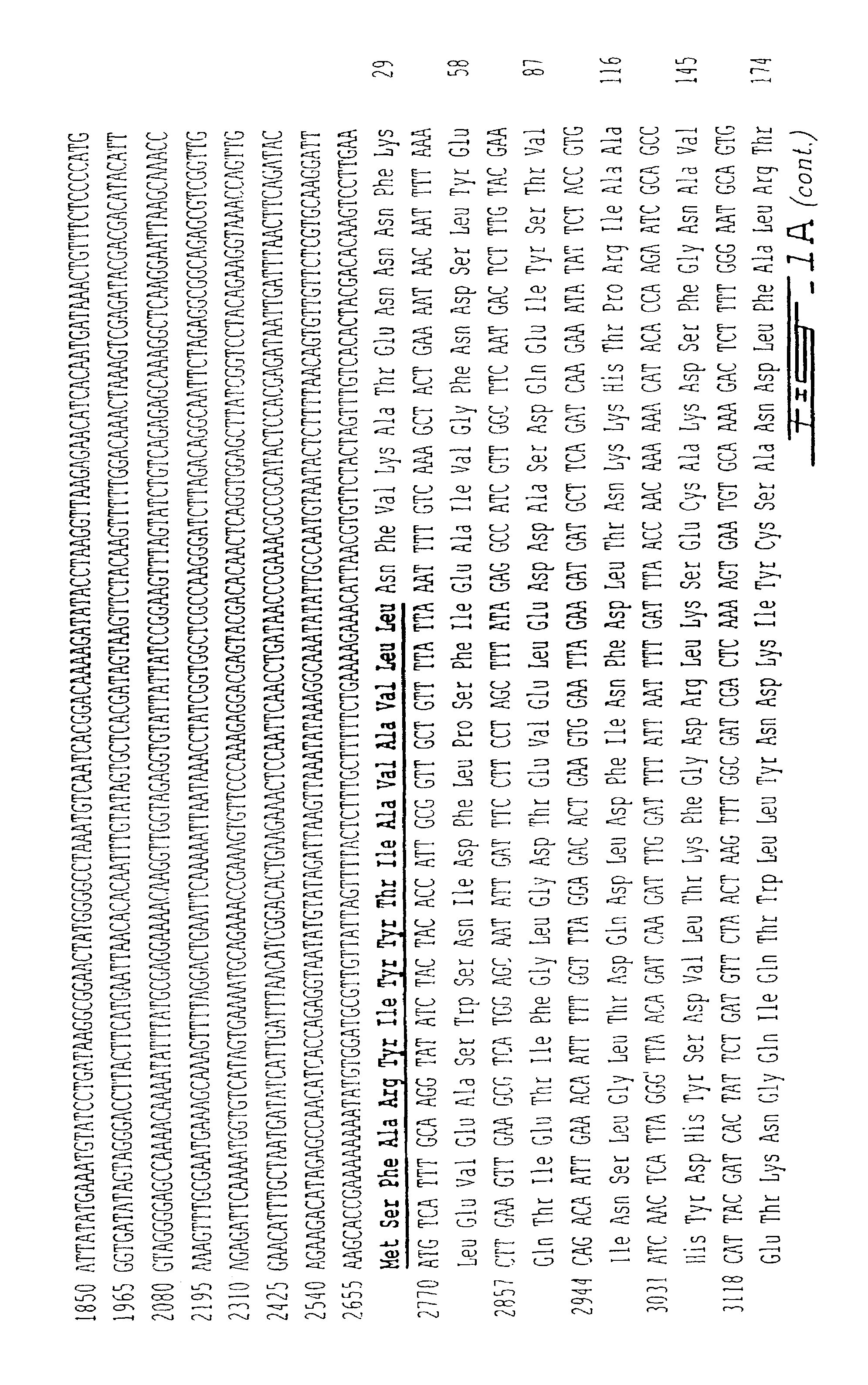Identification of Candida albicans essential fungal specific genes and use thereof in antifungal drug discovery
a technology of essential fungal specific genes and antifungal drugs, applied in the field of identification of i > candida albicans /i > essential fungal specific genes and their use in antifungal drug discovery, can solve the problems of limited efficacy of antifungal compounds, hampered treatment of fungal infection, and high risk of infection, so as to avoid adverse side effects and avoid adverse side effects
- Summary
- Abstract
- Description
- Claims
- Application Information
AI Technical Summary
Benefits of technology
Problems solved by technology
Method used
Image
Examples
example 1
In Vivo Screening Methods for Specific Antifungal Agents
[0137]Having now validated CaKRE5, CaALR1 and CaCDC24 as drug targets in Candida albicans, heterologous expression of CaKRE5, CaALR1, or CaCDC24 in S. cerevisiae kre5, alr1 and cdc24 mutants respectively, allows replacement of the S. cerevisiae gene with that of its C. albicans counterpart and thus permits screening for specific inhibitors to this bona fide drug target in a S. cerevisiae background where the additional experimental tractability of the organism permits additional sophistication in screen development. For example, drugs which block CaKre5p in S. cerevisiae confer K1 killer toxin resistance, and this phenotype can be used to screen for such compounds. In a particular embodiment, CaKRE5 can be genetically modified to function in S. cerevisiae by replacing its promoter sequence with any strong constitutive S. cerevisiae promoters (e.g. GAL10, ACT1, ADH1). As C. albicans utilizes an altered genetic code, in which the...
example ii
In Vitro Screening Methods for Specific Antifungal Agents
1. Use of an In Vitro Assay to Synthesize β-(1,6)-Glucan
[0138]In such an assay the incorporation of labelled glucose from UDP-glucose into a product that can be immunoprecipitated or immobilized with β-(1,6)-glucan antibodies is measured. The specificity of this synthesis can be established by showing its dependence on CaKre5p, and its digestion with β-(1,6)-glucanase
[0139]Drugs which block this in vitro synthesis reaction, block β-(1,6)-glucan synthesis and are candidates for antifungal drugs, some may inhibit Kre5p, others may inhibit other steps in the synthesis of this polymer.
2. Use of a Specific in Vitro Assay for CaKre5p
[0140]CaKre5p has amino-acid sequence similarities to UDP-glucose glycoprotein glucosyltransferases (4). The CaKre5p protein can be heterogeneously expressed and / or purified from Candida albicans and an in vitro assay devised by adding purified GPI-anchored cell wall proteins known to normally contain β-...
example iii
The use of CaALR1, CaKRE5, and CaCDC24 in PCR-Based Diagnosis of Fungal Infection
[0142]Polymerase chain reaction (PCR) based assays provide a number of advantages over traditional serological testing methodologies in diagnosing fungal infection. Issues of epidemiology, fungal resistance, reliability, sensitivity, speed, and strain identification are limited by the spectrum of primers and probes available. The CaKRE5, CaALR1, and CaCDC24 gene sequences enable the design of novel primers of potential clinical use. In addition, as CaAlr1p is thought to localize to the plasma membrane and extend out into the periplasmic space / cell wall, this extracellular domain could act as a serological antigen to which antibodies could be raised and used in serological diagnostic assays.
PUM
| Property | Measurement | Unit |
|---|---|---|
| temperature | aaaaa | aaaaa |
| resistance | aaaaa | aaaaa |
| morphology | aaaaa | aaaaa |
Abstract
Description
Claims
Application Information
 Login to View More
Login to View More - R&D
- Intellectual Property
- Life Sciences
- Materials
- Tech Scout
- Unparalleled Data Quality
- Higher Quality Content
- 60% Fewer Hallucinations
Browse by: Latest US Patents, China's latest patents, Technical Efficacy Thesaurus, Application Domain, Technology Topic, Popular Technical Reports.
© 2025 PatSnap. All rights reserved.Legal|Privacy policy|Modern Slavery Act Transparency Statement|Sitemap|About US| Contact US: help@patsnap.com



